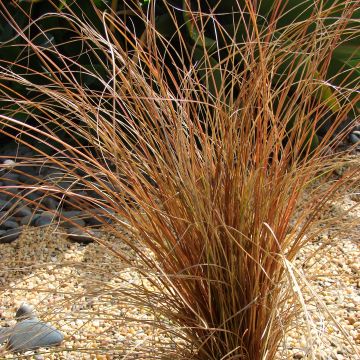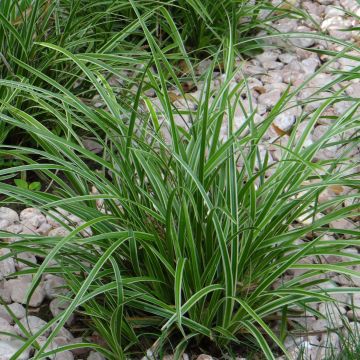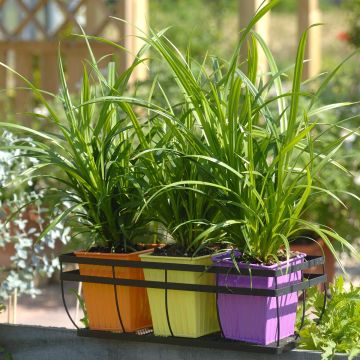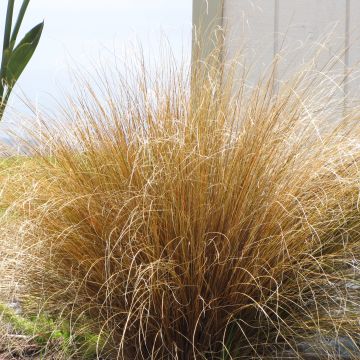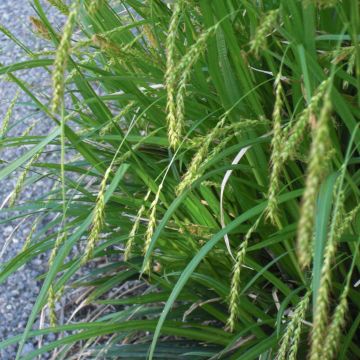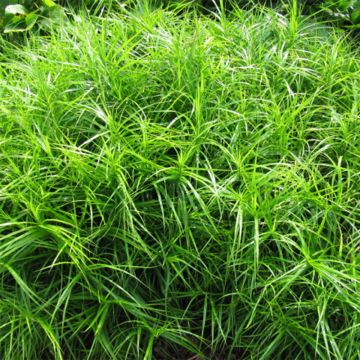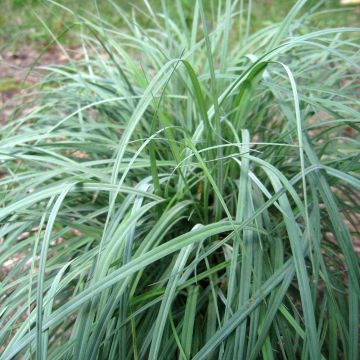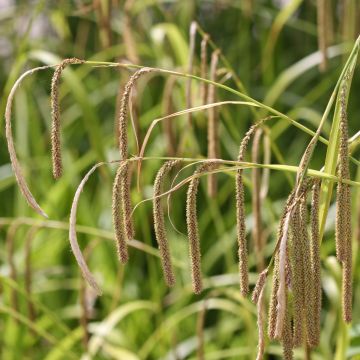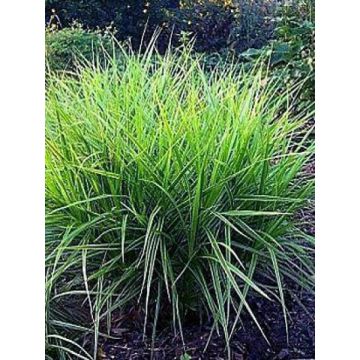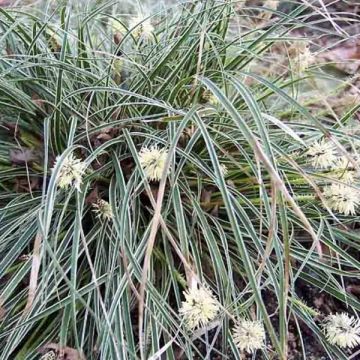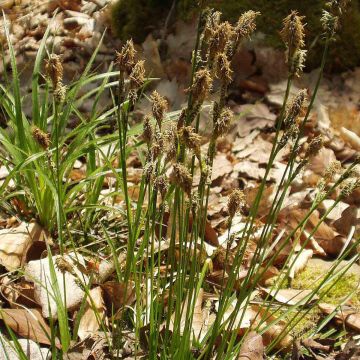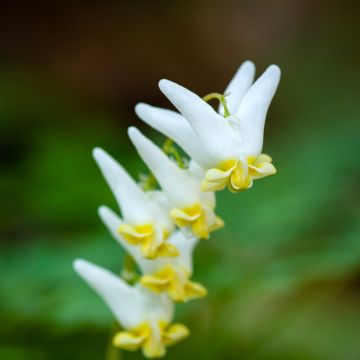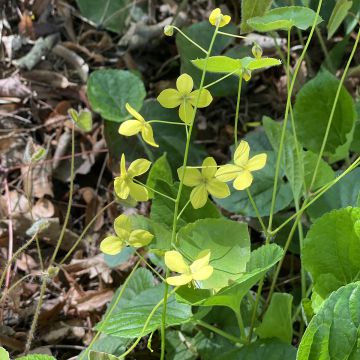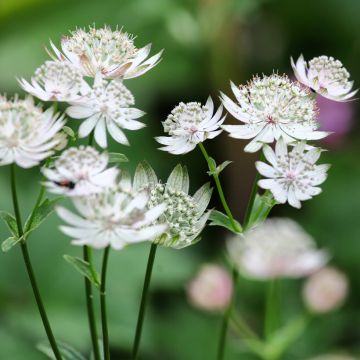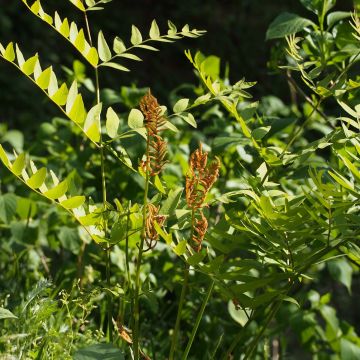Shipping country and language
Your country of residence may be:
Your country of residence is:
For a better user experience on our website, you can select:
Your shipping country:
Andorra
Austria
Belgium
Bulgaria
Canada
Chile
Croatia
Cyprus
Czechia
Denmark
Estonia
Finland
France
Germany
Greece
Hungary
Iceland
Ireland
Italy
Latvia
Lithuania
Luxembourg
Malta
Monaco
Netherlands
Poland
Portugal
Romania
Slovakia
Slovenia
Spain
Sweden
Switzerland
United Kingdom
We only deliver seed and bulb products to your country. If you add other products to your basket, they cannot be shipped.
Language:
French
German
Spanish
English
My Account
Hello
My wish lists
Plantfit
Log in / Register
Existing customer?
New customer?
Create an account to track your orders, access our customer service and, if you wish, make the most of our upcoming offers.
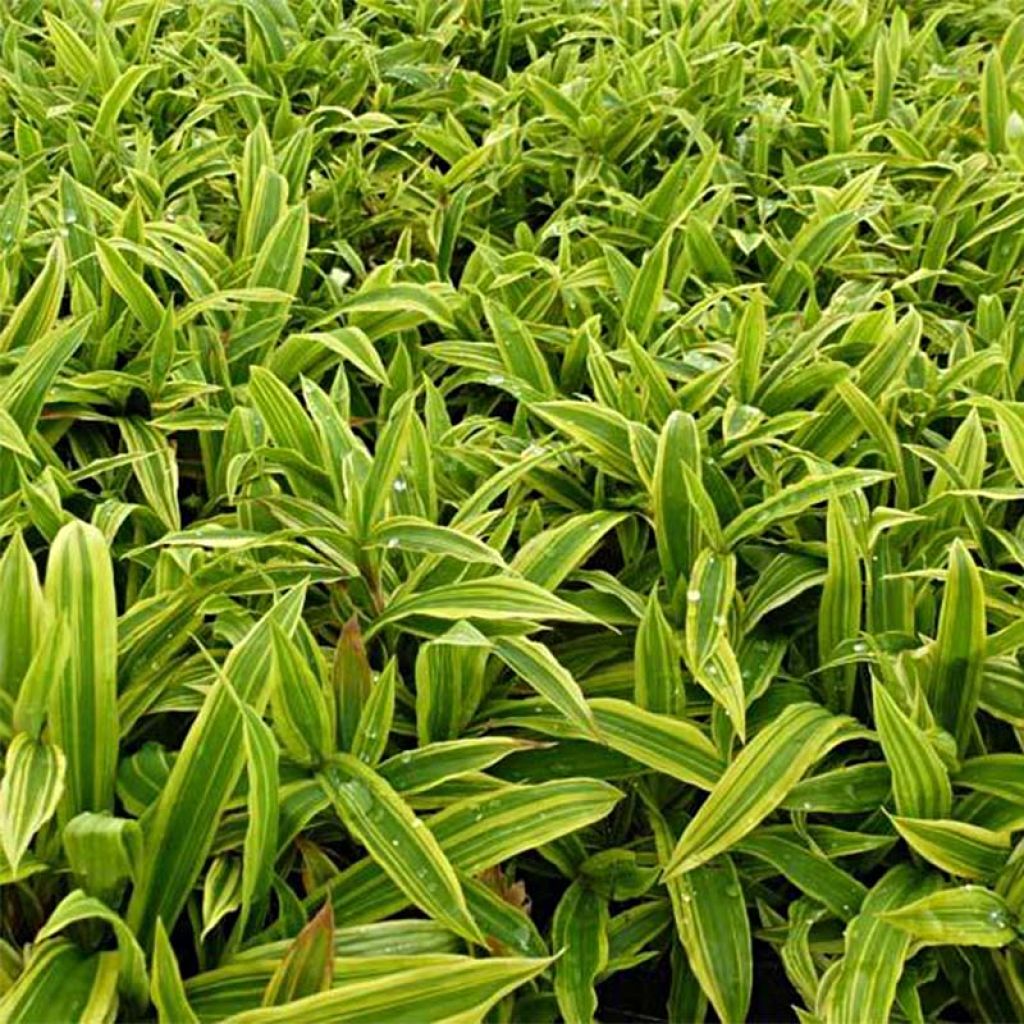

Carex ciliatomarginata Shima Nishiki
Carex ciliatomarginata Shima Nishiki
Carex ciliatomarginata Shima Nishiki
Sedge
Swift and careful delivery. Very lovely young plant upon arrival. Winter transition quite delicate despite the absence of negative temperatures. Fragile recovery while awaiting higher temperatures.
Thibault, 19/04/2020
Why not try an alternative variety in stock?
View all →Order in the next for dispatch today!
Dispatch by letter from €3.90.
Delivery charge from €5.90 Oversize package delivery charge from €6.90.
More information
This item is not available in your country.
Schedule delivery date,
and select date in basket
This plant carries a 12 months recovery warranty
More information
We guarantee the quality of our plants for a full growing cycle, and will replace at our expense any plant that fails to recover under normal climatic and planting conditions.
From €5.90 for pickup delivery and €6.90 for home delivery
Express home delivery from €8.90.
Does this plant fit my garden?
Set up your Plantfit profile →
Description
Carex ciliatomarginata 'Shima Nishiki' stands out from other varieties of sedge with its fairly wide evergreen foliage, which closely resembles that of certain dwarf bamboos. Its astonishing leaves are marginated and striated with golden yellow on a vibrant green background. This small perennial grass forms a beautiful, erect and trailing, bright and compact tuft, remarkable as a ground cover in cool and shady areas of the garden. It should be planted in neutral to acidic moist soil, in partial shade or even in full shade.
Carex ciliatomarginata 'Shima Nishiki' belongs to the large Cyperaceae family. This small grass with short rhizomes forms a compact, erect and trailing tuft, about 20cm (8in) in height and 45cm (18in) in diameter. Its persistent, ovate and tapering leaves measure 1cm (1in) in width and approximately 10cm (4in) in length. Their edges are tapered and their tips drooping. Their vibrant and dark green colour is bordered by a golden yellow margin and traversed by equally golden fine longitudinal lines. In late spring, short green spikes 1 to 3cm (1in) long appear among the foliage, carried by slender stems about 15cm (6in) in height.
The 'Shima Nishiki' sedge is a small 'herb' with refined foliage and a minimalist style. It will form a dense bouquet of foliage in the shade, covering the ground and discouraging weeds. In this usage, it can be paired with Milium effusum 'Aureum' or dwarf hostas, to which it bears resemblance. Its design does not require the presence of another plant by its side. However, it will bring lightness to the lush foliage of rodgersias and the fronds of ferns. It also pairs well with heucheras. As this grass appreciates moist to wet soils, it will naturally find its place in water gardens, on banks, or at the edge of water features, where it will contribute to soil stabilisation. Also place it along the borders of perennial beds. For a beautiful wild effect, plant it en masse, in a contemporary or countryside garden.
Carex ciliatomarginata Shima Nishiki in pictures
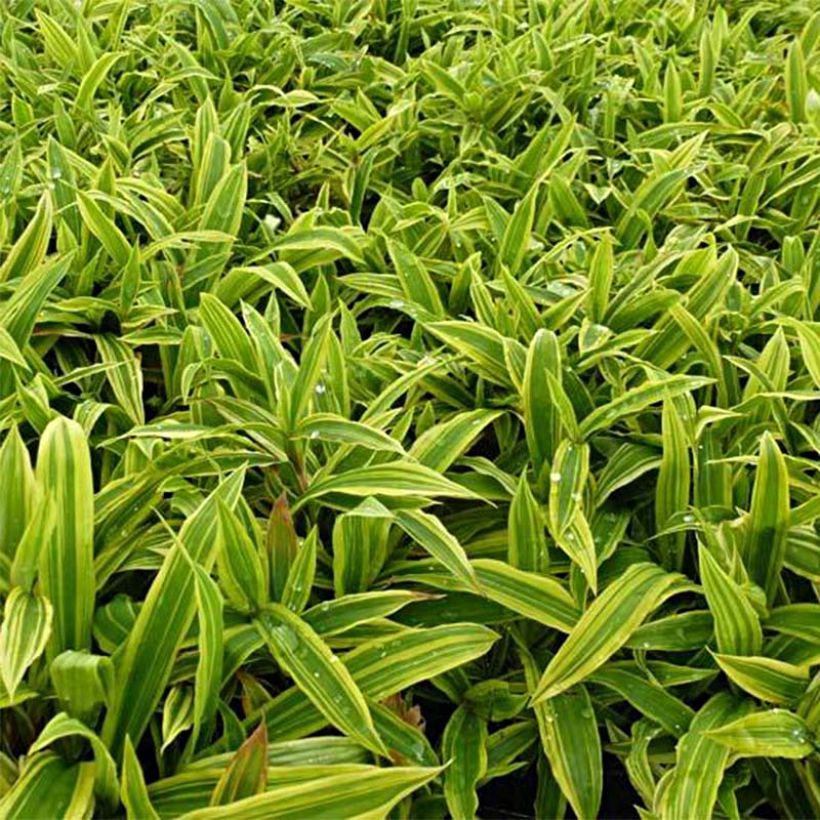

Flowering
Foliage
Plant habit
Botanical data
Carex
ciliatomarginata
Shima Nishiki
Cyperaceae
Sedge
Cultivar or hybrid
Other Carex
Planting and care
Carex ciliatomarginata 'Shima Nishiki' prefers moist, acidic to neutral, well-drained soils devoid of limestone. It requires a semi-shaded or even shaded exposure, sheltered from direct sunlight. It tolerates moderate and short periods of drought quite well. This easy-to-grow grass requires very little maintenance. Planting should take place outside of frost periods. Water abundantly at planting. Avoid heavy fertilisation applications. Remove damaged foliage during the growing season and trim back the clump in late winter, just before the start of vegetation.
Planting period
Intended location
Care
- , onOrder confirmed
Reply from on Promesse de fleurs
Shade-loving perennials
Haven't found what you were looking for?
Hardiness is the lowest winter temperature a plant can endure without suffering serious damage or even dying. However, hardiness is affected by location (a sheltered area, such as a patio), protection (winter cover) and soil type (hardiness is improved by well-drained soil).

Photo Sharing Terms & Conditions
In order to encourage gardeners to interact and share their experiences, Promesse de fleurs offers various media enabling content to be uploaded onto its Site - in particular via the ‘Photo sharing’ module.
The User agrees to refrain from:
- Posting any content that is illegal, prejudicial, insulting, racist, inciteful to hatred, revisionist, contrary to public decency, that infringes on privacy or on the privacy rights of third parties, in particular the publicity rights of persons and goods, intellectual property rights, or the right to privacy.
- Submitting content on behalf of a third party;
- Impersonate the identity of a third party and/or publish any personal information about a third party;
In general, the User undertakes to refrain from any unethical behaviour.
All Content (in particular text, comments, files, images, photos, videos, creative works, etc.), which may be subject to property or intellectual property rights, image or other private rights, shall remain the property of the User, subject to the limited rights granted by the terms of the licence granted by Promesse de fleurs as stated below. Users are at liberty to publish or not to publish such Content on the Site, notably via the ‘Photo Sharing’ facility, and accept that this Content shall be made public and freely accessible, notably on the Internet.
Users further acknowledge, undertake to have ,and guarantee that they hold all necessary rights and permissions to publish such material on the Site, in particular with regard to the legislation in force pertaining to any privacy, property, intellectual property, image, or contractual rights, or rights of any other nature. By publishing such Content on the Site, Users acknowledge accepting full liability as publishers of the Content within the meaning of the law, and grant Promesse de fleurs, free of charge, an inclusive, worldwide licence for the said Content for the entire duration of its publication, including all reproduction, representation, up/downloading, displaying, performing, transmission, and storage rights.
Users also grant permission for their name to be linked to the Content and accept that this link may not always be made available.
By engaging in posting material, Users consent to their Content becoming automatically accessible on the Internet, in particular on other sites and/or blogs and/or web pages of the Promesse de fleurs site, including in particular social pages and the Promesse de fleurs catalogue.
Users may secure the removal of entrusted content free of charge by issuing a simple request via our contact form.
The flowering period indicated on our website applies to countries and regions located in USDA zone 8 (France, the United Kingdom, Ireland, the Netherlands, etc.)
It will vary according to where you live:
- In zones 9 to 10 (Italy, Spain, Greece, etc.), flowering will occur about 2 to 4 weeks earlier.
- In zones 6 to 7 (Germany, Poland, Slovenia, and lower mountainous regions), flowering will be delayed by 2 to 3 weeks.
- In zone 5 (Central Europe, Scandinavia), blooming will be delayed by 3 to 5 weeks.
In temperate climates, pruning of spring-flowering shrubs (forsythia, spireas, etc.) should be done just after flowering.
Pruning of summer-flowering shrubs (Indian Lilac, Perovskia, etc.) can be done in winter or spring.
In cold regions as well as with frost-sensitive plants, avoid pruning too early when severe frosts may still occur.
The planting period indicated on our website applies to countries and regions located in USDA zone 8 (France, United Kingdom, Ireland, Netherlands).
It will vary according to where you live:
- In Mediterranean zones (Marseille, Madrid, Milan, etc.), autumn and winter are the best planting periods.
- In continental zones (Strasbourg, Munich, Vienna, etc.), delay planting by 2 to 3 weeks in spring and bring it forward by 2 to 4 weeks in autumn.
- In mountainous regions (the Alps, Pyrenees, Carpathians, etc.), it is best to plant in late spring (May-June) or late summer (August-September).
The harvesting period indicated on our website applies to countries and regions in USDA zone 8 (France, England, Ireland, the Netherlands).
In colder areas (Scandinavia, Poland, Austria...) fruit and vegetable harvests are likely to be delayed by 3-4 weeks.
In warmer areas (Italy, Spain, Greece, etc.), harvesting will probably take place earlier, depending on weather conditions.
The sowing periods indicated on our website apply to countries and regions within USDA Zone 8 (France, UK, Ireland, Netherlands).
In colder areas (Scandinavia, Poland, Austria...), delay any outdoor sowing by 3-4 weeks, or sow under glass.
In warmer climes (Italy, Spain, Greece, etc.), bring outdoor sowing forward by a few weeks.



